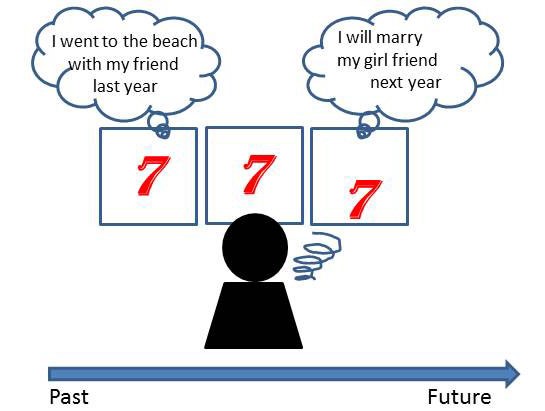Proposed Researches A04 : "Pathological Conditions"
■ Click on title
-
 A multimodal approach to studying the brain mechanism responsible for processing the perceptual unit of time and the “subjective present”
A multimodal approach to studying the brain mechanism responsible for processing the perceptual unit of time and the “subjective present”- Principal Investigator
- Yasuo Terao
Associate Prof., The Univ. of Tokyo Hospital
-
- Co-investigator
- Masato Yumoto
Associate Prof., The Univ. of Tokyo Hospital - Co-investigator
- Toshiaki Furubayashi
Prof., Tohoku Bunka Gakuen Univ. - Co-investigator
- Ritsuko Hanajima
Associate Prof., Kitasato Univ. Hospital
Previous studies have suggested that temporal information in the sub- and suprasecond range is processed differently in the brain. This finding leads to the notion that there may be a limit to the time window within which the brain can integrate stimuli into a perceptual unit, and above which the brain can no longer process information as a unit. As Pöppel has suggested, if present, such a temporal limit would also correspond to the sense of the “subjective present.” The goal of this study is to ascertain whether there is indeed a limit of temporal integration in humans and, if so, to determine the length of this limit. Using a multimodal neurophysiological approach, we will also investigate the brain structures responsible for this temporal processing and whether it is affected by age, disease, training or non-invasive brain stimulation. This approach will provide insights into the neural mechanisms of differential subjective duration, particularly insights into the brain mechanism responsible for processing the “subjective present.”
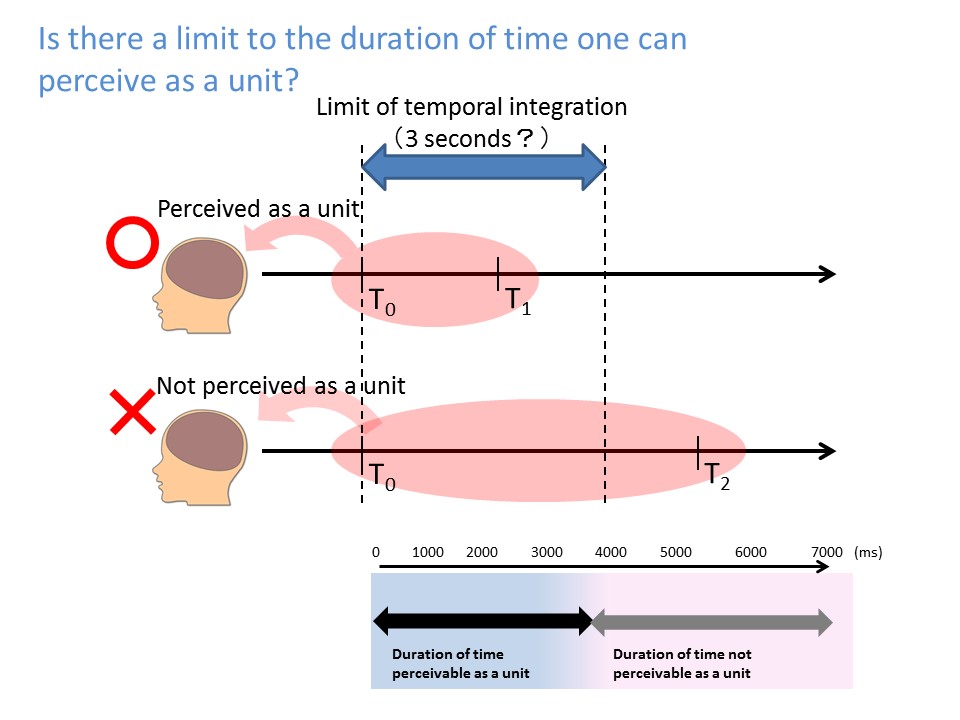
-
 Neural mechanisms of confabulation: Interaction between time orientation and memory
Neural mechanisms of confabulation: Interaction between time orientation and memory- Principal Investigator
- Takashi Tsukiura
Associate Prof., Grad. Sch. of Human and Environmental Studies, Kyoto Univ.
-
- Co-investigator
- Toshiya Murai
Prof., Grad. Sch. of Human and Environmental Studies, Kyoto Univ - Co-investigator
- Keita Ueda
Assistant Prof., Grad. Sch. of Human and Environmental Studies, Kyoto Univ
Confabulation, defined as the "falsification of memory occurring in clear consciousness in association with an organically derived amnesia," is often observed in amnesic patients. Previous studies have shown that confabulation could be caused partly by a disturbance of time-related information in memory. However, little is known about the relationship between confabulation and other psychological processes, including the processing of time-related information, and about the neural mechanisms underlying confabulation in amnesic patients. We are investigating the neural mechanisms of confabulation by focusing on an interaction between psychological processes of time orientation and long-term memory. To tackle this research question, our team employs two methods of neuropsychological evaluation of brain-damaged patients and functional neuroimaging studies to examine the neural mechanisms in healthy participants.

-
 Subjective time and its neural substrate in obsessive-compulsive disorder
Subjective time and its neural substrate in obsessive-compulsive disorder- Principal Investigator
- Yuki Sakai
Research Assistant Prof. Department of Psychiatry, Graduate School of Medical Science, Kyoto Prefectural Univ. of Medicine.
-
- Co-investigator
- Saori C. Tanaka
Department Head, Department of Neural Computation for Decision-Making, ATR Brain Information Communication Research Lab. Group - Co-investigator
- Jin Narumoto
Prof. Department of Psychiatry, Graduate School of Medical Science, Kyoto Prefectural Univ. of Medicine - Co-investigator
- Takashi Nakamae
Assistant Prof. Department of Psychiatry, Graduate School of Medical Science, Kyoto Prefectural Univ. of Medicine
The alternation of subjective time in psychiatric disorders has been regarded as a core characteristic of its psychological and behavioral traits. However, there have been few studies on this topic. We hypothesized that ‘anxiety’ is primarily related to subjective time, as it is an unpleasant emotion caused by excessive rumination on the past or future. We have previously investigated obsessive-compulsive disorder (OCD), which is characterized by repetitive behavior driven by anxiety, and hypothesized that this behavior could be explained by an altered time scale parameter in a computational model of OCD and revealed evidence for this using behavioral tasks and fMRI. Nevertheless, the relationships between altered time scale parameters in our model and subjective time itself remain unclear. In this research project, we attempt to elucidate relationships among behavioral and neural substrate factors related with subjective time in OCD, promote an understanding of OCD, and contribute to knowledge on altered subjective time in other psychiatric disorders.
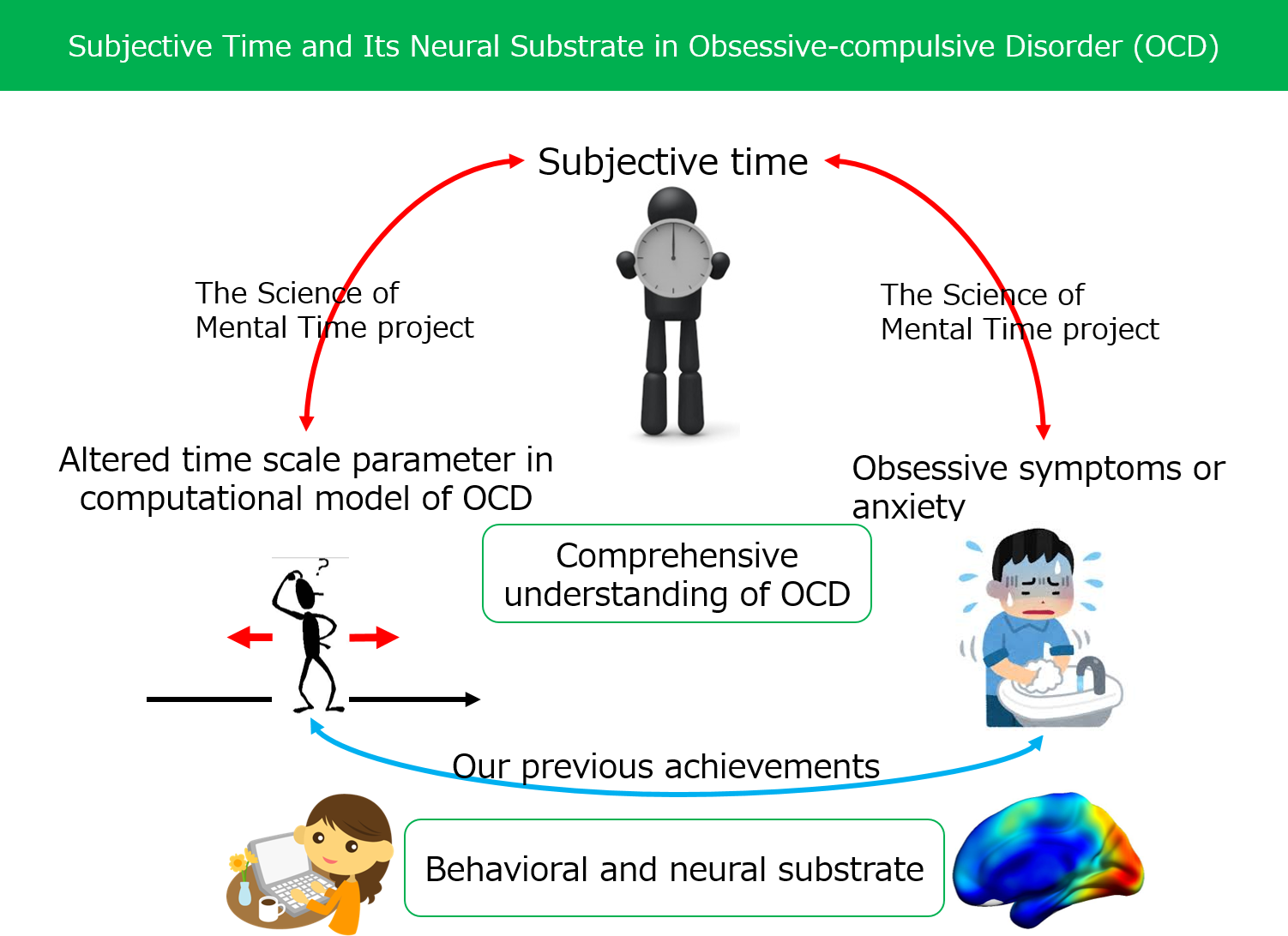
-
 A cognitive neuroscience approach to investigate future cognition: Perspectives from psychiatry and autonomic neuroscience
A cognitive neuroscience approach to investigate future cognition: Perspectives from psychiatry and autonomic neuroscience- Principal Investigator
- Satoshi Umeda
Prof., Department of Psychology, Keio Univ.
-
- Co-investigator
- Masaru Mimura
Prof., Department of Neuropsychiatry, Keio Univ. Sch. of Medicine - Co-investigator
- Masato Asahina
Medical Doctor, Institute of Neuroscience, Medical Corporation Dowakai - Co-investigator
- Yuri Terasawa
Associate Prof. Department of Psychology, Keio Univ. - Co-investigator
- Yoshiko Kurosaki
Assistant Professor. School of Rehabilitation, Health Sciences Univ. of Hokkaido
Prospection, defined as cognitive functions related to the future, includes prospective memory, autonomic future thinking, and affective forecasting. Because prospection primarily involves unconscious processes, we need to measure autonomic bodily reactivities in addition to behavioral and brain activities. Our research project will focus on the important triad of “mind, brain and body” and will investigate the underlying mechanisms of abnormal future thinking in various psychiatric and autonomic disorders, including anxiety and depression.
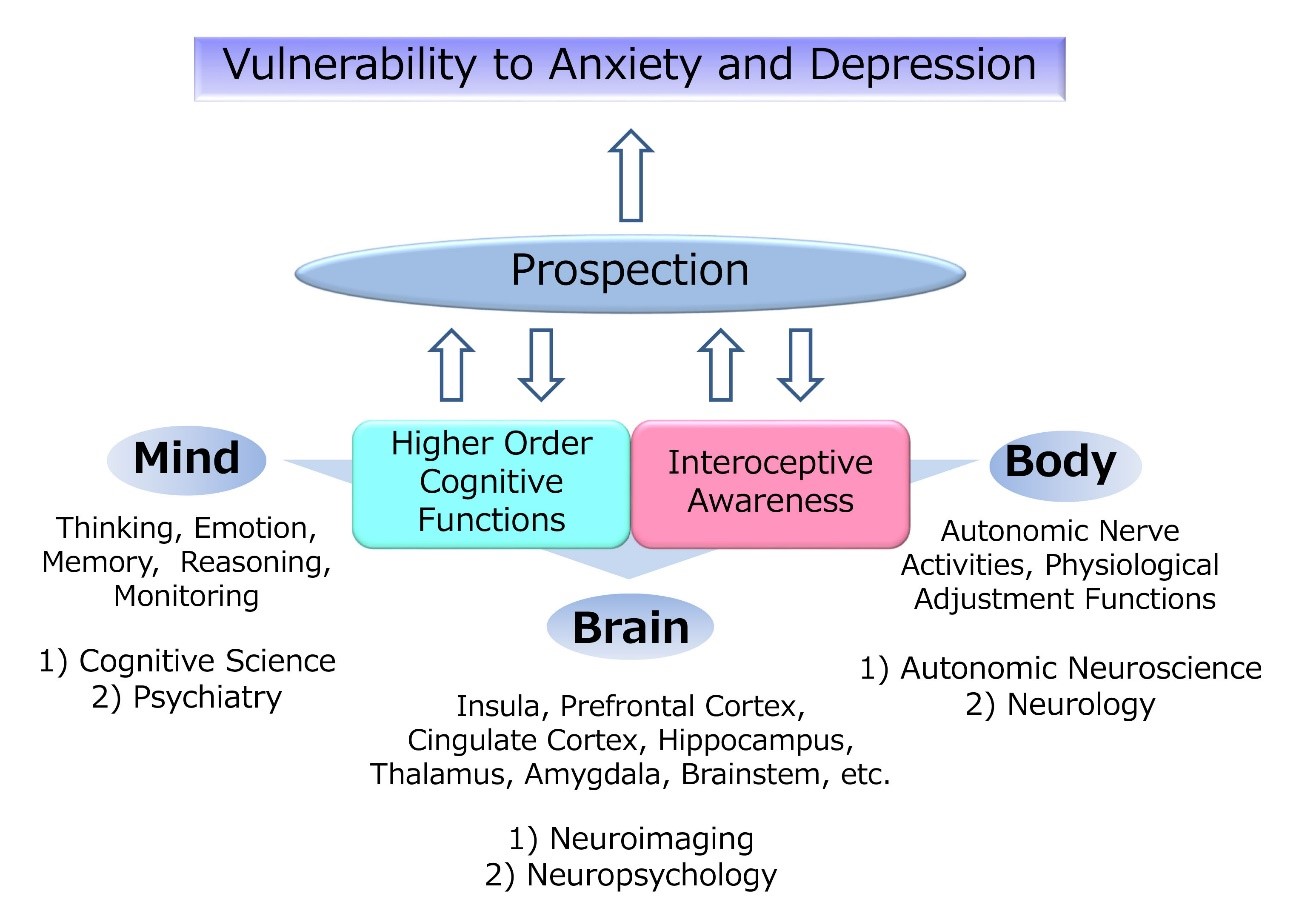
-
 A neuropsychological approach to the study of the subjective present
A neuropsychological approach to the study of the subjective present- Principal Investigator
- Akira Midorikawa
Prof. Faculty of Letters, Chuo Univ.
-
It is known that some brain-damaged patients show subjective time disturbances. In this study, we focus on disturbances of the subjective present using two approaches: micro- and macro-processing. With regard to micro-processing of the subjective present, the processes of “perceived timing,” “subjective duration,” and “mental clock” are examined. With regard to macro-processing, “time orientation” and “age awareness” are examined. On the basis of these studies, we aim to obtain a comprehensive understanding of the relationships between the subjective present and its neural mechanisms.
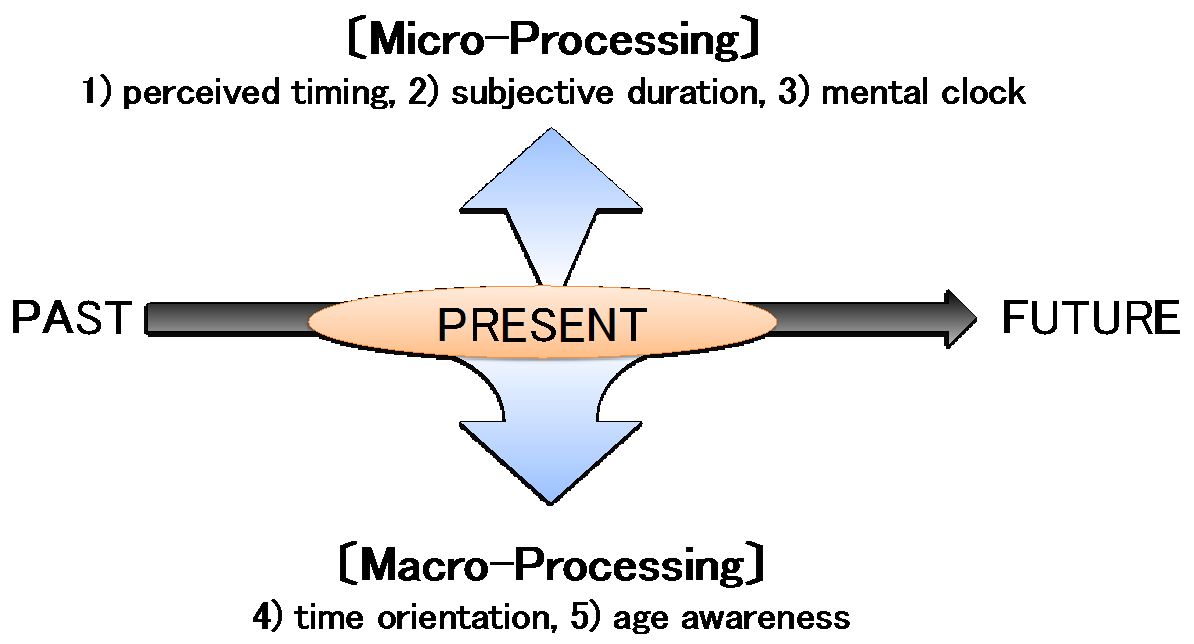
-
 Relationship between hypersensitivity to touch and excess tactile temporal resolution in individuals with autism-spectrum disorders
Relationship between hypersensitivity to touch and excess tactile temporal resolution in individuals with autism-spectrum disorders- Principal Investigator
- Masakazu Ide
PD., Department of Rehabilitation for Brain Functions, NRCD.
-
Hypersensitivity and hyposensitivity are now regarded as important aspects of autism-spectrum disorders (ASD). Although individuals with ASD can detect very small vibrotactile stimulation, the relationship between this enhanced detection ability and hypersensitivity remains unclear. However, it has also reported that these individuals can detect very short temporal lags in specific situations. We assume that such excess temporal resolution is an underling basis of hypersensitivity. In our studies, we will examine whether the temporal resolution that is measured by tactile temporal order judgment is associated with daily experiences of hypersensitivity. Namely, strong perceptual impression might be derived from the processing of temporal summation of stimulus inputs, as stimulation delivered in a certain temporal range is excessively divided into short temporal units. Throughout these studies, we will reveal that hypersensitivity and hyposensitivity are closely related to ‘Mental time’.

Proposed Researches B01 : "Linguistics and Philosophy"
-
 When time changes into rhythm: Potential neural mechanisms that also involve speech perception
When time changes into rhythm: Potential neural mechanisms that also involve speech perception- Principal Investigator
- Tsuyoshi Kuroda
Assistant Prof.(Specially Appointed), Faculty of Informatics, Shizuoka Univ.
-
- Co-investigator
- Makoto Miyazaki
Prof., Faculty of Informatics, Shizuoka Univ. - Co-investigator
- Hiroshi Kadota
Associate Prof., Research Center for Brain Communication, Kochi Univ. of Technology - Co-investigator
- Fuminori Ono
Lecturer, Faculty of Education, Yamaguchi Univ.
The multiple-look effect is a perceptual phenomenon in which the ability to discriminate between time intervals is enhanced when those intervals are presented repeatedly such that a regular rhythm is formed. This finding indicates that a different mode of duration processing, involved with rhythm perception, is activated when the presentation of time intervals is repeated. The purpose of our proposed project is to (1) identify when and where duration is changed into rhythm in the brain and (2) examine how the neural mechanisms underlying rhythm formation are related to speech perception. This project consists of psychophysical and neurophysiological experiments that test the multiple-look effect with non-speech and speech sounds. The final outcomes of the project will contribute to identifying the brain region involved in rhythm as well as its association with time and speech perception in the mapping of mental time that “The Science of Mental Time” aims to construct.
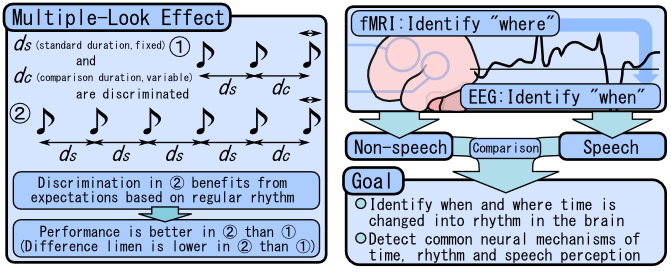
-
 An Analysis of Moral/Mental Value Judgments with Time Tree Diagrams
An Analysis of Moral/Mental Value Judgments with Time Tree Diagrams- Principal Investigator
- Takuo Aoyama
Associate Prof. The Research Institute for Time Studies, Yamaguchi Univ.
-
- Co-investigator
- Makoto Miyazaki
Prof. The Research Institute for Time Studies, Yamaguchi Univ. - Co-investigator
- Masahiko Terao
Assistant Prof. The Research Institute for Time Studies, Yamaguchi Univ.
Humans usually think that there is a single possible past history but many possible future scenarios. In other words, we are accustomed to representing time with a tree diagram of possibilities, with the branches diverging from the past to the future. This study clarifies the relationship between this representation of time and various value judgments in daily life. The word “value” in the above sentence means, first, moral value concerning responsibility and punishment, and second, mental value that adds colors to daily life. Investigation into the link between moral value judgments and time tree diagrams is closely connected to arguments about Frankfurt-style cases, which are prominent in analytic philosophy.
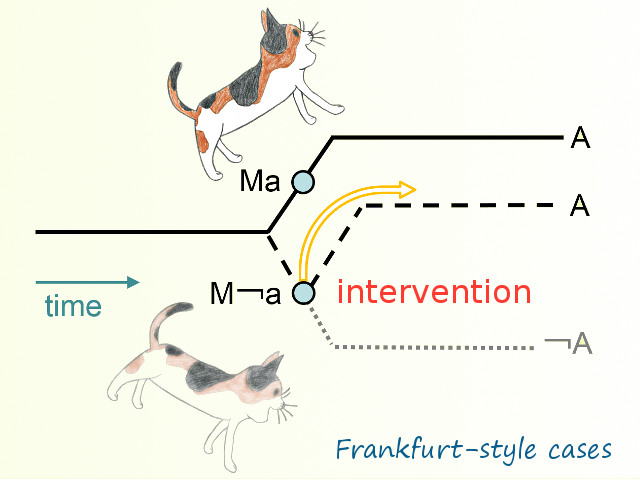
-
 Neural representations of mental time shift in the past, present, and future
Neural representations of mental time shift in the past, present, and future- Principal Investigator
- Shingo Tokimoto
Prof. Faculty of Foreign Language Studies, Mejiro Univ.
-
- Co-investigator
- Yayoi Miyaoka
Prof., Hiroshima Univ. of Economics - Co-investigator
- Naoko Tokimoto
Instructor, Policy Management, Shobi Univ.
This study examines neural representations of human cognition of time via EEG/MEG recordings observed while participants read Japanese sentences, including temporal expressions. From the viewpoint of language use, we can identify two salient characteristics of the human cognition of time: a) we can verbally describe an event that we cannot perceive at the time we are describing it and b) we can make an utterance as if we were at a time point different from the time of the utterance. We will manipulate the time of a described event as the past, present, or future in stimulus sentences with the event time to be referred to by either kono-hi (“this day”) or sono-hi (“that day”). Furthermore, we will examine the relationships between mental time shift and the theory of mind by determining the source localization of EEG/MEG recordings.
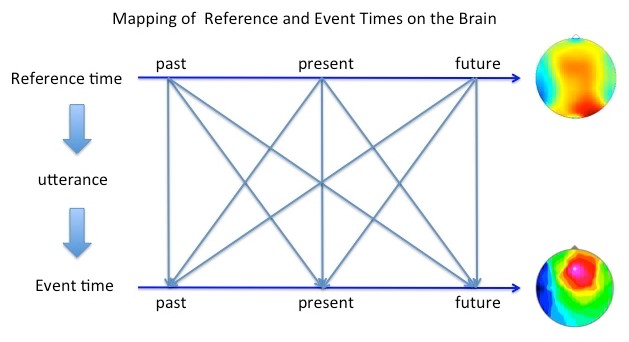
Proposed Researches C01 : "Comparative Ethology"
-
 Genesis of the mind that can place the past and future
Genesis of the mind that can place the past and future- Principal Investigator
- Kazuo Fujita
Prof., Grad. Sch. of Letters, Kyoto Univ.
-
- Co-investigator
- Hika Kuroshima
Research Fellow, Grad. Sch. of Letters, Kyoto Univ.
Humans place events in the past and future in their mind. This project aims to examine whether this recursive ability is a human monopoly by testing it in animals of various taxa. In the 1st stage of our project, we asked whether animals had a “mind that places the past” by examining the incidental nature of episodic memory to successfully demonstrate the ability for retrieval and adaptive use of incidentally formed memory traces in dogs, cats, and horses. As the project continues, we will apply the same analysis to other species and at the same time explore the involvement of the aspects of what, where, and when in the incidental memories observed in animals. As a study of the “mind that places the future,” we will continue to examine prospective memory in pigeons. In addition, we will analyze future-oriented information-seeking behavior prepared for the predicted difficulty of a task with capuchin monkeys. After establishing the appropriate tasks to investigate these two processes, we plan to apply them to various species, including human toddlers, apes, and parrots.

-
 Development of mental time-travel ability during infancy
Development of mental time-travel ability during infancy- Principal Investigator
- Tamami Nakano
Associate Prof., Grad. Sch. of Frontier Biosciences, Osaka Univ.
-
When and how does the ability to mentally travel in time develop? Mental time travel requires the function of episodic memory. It has been proposed that episodic memory does not function during the first few years after birth. However, the hippocampus, which plays an important role in episodic memory, is involved in recognition memory in early infancy. Therefore, I speculated that episodic memory gradually develops during infancy. To test this possibility, I plan to examine anticipatory eye movements of preverbal infants while they view videos that they have seen once before. This method has successfully demonstrated the existence of episodic-like memory in non-verbal primates. The use of this method is expected to reveal the stage at which episodic memory begins to function, how long the episodic memory lasts in preverbal children and whether they can utilize it for future prediction.

-
 Interval timing mechanisms along with developmental differences in psychological properties in rodents
Interval timing mechanisms along with developmental differences in psychological properties in rodents- Principal Investigator
- Shogo Sakata
Prof., Grad. Sch. of Integrated Arts & Sciences, Hiroshima Univ.
-
This study focuses on the common perception of interval timing in animals including humans. The perception of time in the range of seconds to minutes is very important in the field of comparative psychology. The most commonly used temporal discrimination tasks in animal studies of operant conditioning are the bisection task and the peak interval task. Interval timing is the ability of animals to perceive and process durations within a small range. We focus on comparing the ability of rodents to perform interval timing from a few seconds to several tens of seconds and the influence of the developmental stage on this psychological property. I will actively present these results at conferences in Japan and at international meetings. I also plan to submit an article for a special issue in an academic journal. I am organizing a symposium at the International Society for Comparative Psychology Meeting to be held in Sydney in July, 2016. These activities provide a good opportunity for discussion with investigators from all over the world.
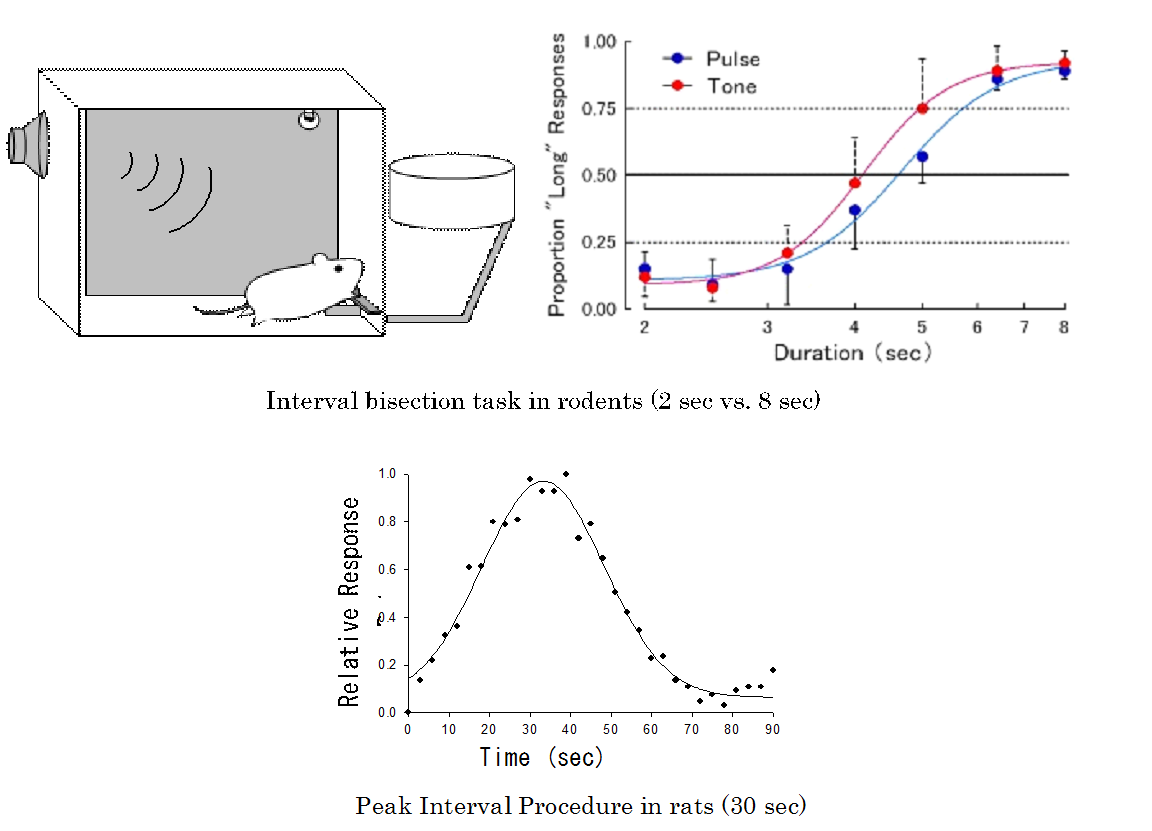
-
 Exploring mental time using theoretical frameworks for delayed conditioning
Exploring mental time using theoretical frameworks for delayed conditioning- Principal Investigator
- Yutaka Sakai
Prof., Grad. Sch. of Brain Sciences, Tamagawa Univ.
-
- Co-investigator
- Yoshikazu Isomura
Prof., Grad. Sch. of Brain Sciences, Tamagawa Univ.
Conditioning with delayed rewards is effective for many species of animals and can therefore provide a common framework with which to compare different species in order to investigate the nature of mental time. In this project, we have constructed a framework to explore the profile of temporal discount based on a theoretical hypothesis that temporal discount is hyperbolic for continuous time and exponential for discrete time steps. Next, we will attempt to construct a framework to explore mental time representation. Recently, strange phenomena in delayed conditioning for compound stimuli have been reported. After conditioning with a light and a sound with different time intervals, animal responses to the compound stimuli of the light and the sound around intermediate timings were recorded. If the time intervals were represented by internal states in neural systems and the behavioral responses were conditioned with the internal states, then the responses should occur at the respective timings, which is inconsistent with actual observations. We will construct a theoretical framework to clear the inconsistency and provide leads to intra-regional collaborations for experimental confirmation.

Proposed Researches D01 : Neural basis and applications
-
 Odors that are part of the background context of past episodes can modify the order of these events in the mental timeline—an investigation of the underlying mechanism.
Odors that are part of the background context of past episodes can modify the order of these events in the mental timeline—an investigation of the underlying mechanism.- Principal Investigator
- Mitsunari Abe
Associate Prof,Tohoku Medical Megabank Organization.
-
Humans sometimes experience the illusion that an event that actually occurred years ago happened only a few days ago when they are presented with the same situation as that in which the event previously occurred. Thus, the background context of a situation can modify the perception of temporal order with respect to the events that preceded or followed it. In this study, we will identify the regions of the brain underlying the effects of context on the temporal order perception of past events. Adult healthy volunteers are required to judge temporal order with respect to two past events that the subjects experienced while being exposed to different odors. Subjects make an incorrect temporal order judgment of past and recent events when they are exposed to the same odor as that experienced in the original event. Using functional magnetic resonance imaging techniques, we will examine brain activity associated with the incorrect responses.

-
 Neural mechanisms underlying temporal association memory
Neural mechanisms underlying temporal association memory- Principal Investigator
- Shinya Ohara
Research Associate, Tohoku University Graduate School of Life Sciences
-
The entorhinal cortex is a major input and output structure of the hippocampal formation and plays an important role in memory formation. It has been reported that entorhinal neurons in the superficial layer display persistent firing, which is thought to be an important mechanism for associating events across temporal gaps (temporal association). We recently found that neurons located in superficial layer III (layer IIIa) of the lateral entorhinal cortex do not project to the hippocampus but have strong intrinsic connections within the entorhinal cortex. We hypothesized that the entorhinal local circuit, which consists of these layer IIIa neurons, contributes to temporal association memory. The aim of this study is to delineate the structure of this lateral entorhinal local circuit and to reveal its role in temporal association memory.
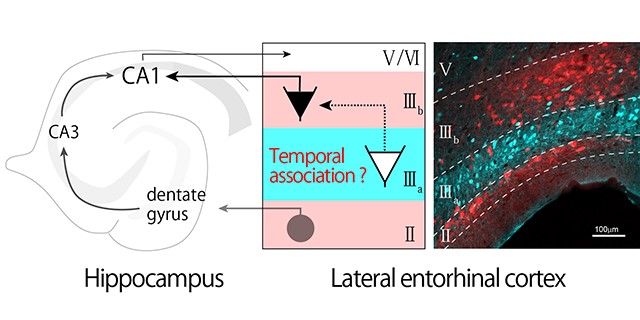
-
 Insect learning of a time interval
Insect learning of a time interval- Principal Investigator
- Hiromu Tanimoto
Prof., Grad. Sch. of Life Sciences, Tohoku Univ.
-
Time perception is an integral part of our daily activities. However, it remains unclear how the brain keeps time. Here we propose to establish a behavioral assay for measuring time perception in Drosophila. Our approach is focused on temporal conditioning analyzed by machine vision. Compared to the perception of sensory stimuli, such as light and smell, the difficulty in time perception is the identification of the neuronal “timer,” given no obvious external sensor. After establishing a rigorous behavioral paradigm for temporal conditioning, we seek to identify the roles of neuromodulators in temporal conditioning.

-
 Perception and production of a time interval longer than 10 seconds: Experimental study of the cascaded delay model of the posterior cingulate retrosplenial cortex
Perception and production of a time interval longer than 10 seconds: Experimental study of the cascaded delay model of the posterior cingulate retrosplenial cortex- Principal Investigator
- Kazuo Okanoya
Prof., Grad. Sch. of Arts & Sciences, Univ. of Tokyo
-
- Co-investigator
- Tohru Kurotani
Research Fellow., RIKEN Brain Science Institute
The retrosplenial cortex (RSC) of the posterior cingulate receives input from the thalamus and hippocampus. There are neurons that show delayed responses in the RSC, and these neurons make cascaded connections. Thalamic sensory information received by these superficial neurons is also relayed to the deep layer neurons. Since the deep layer neurons also receive the memory information from the subiculum (a part of the hippocampal formation), these sensory and memory information can converge at the deep layer, which may function as coincidence detectors at the neurons in the deep layer by Hebbian dynamics. This is the cascaded delay model that we propose through our studies. The aim of the present study is to identify the relationship between the production and perception of a time interval longer than 10 seconds at behavioral and neural levels. The cascaded delay model can function independently of sensory modality. The model also suggests shared mechanisms for production and perception. Thus, our proposal will advance the study of “mind time” by providing a novel view of time representation in the brain.
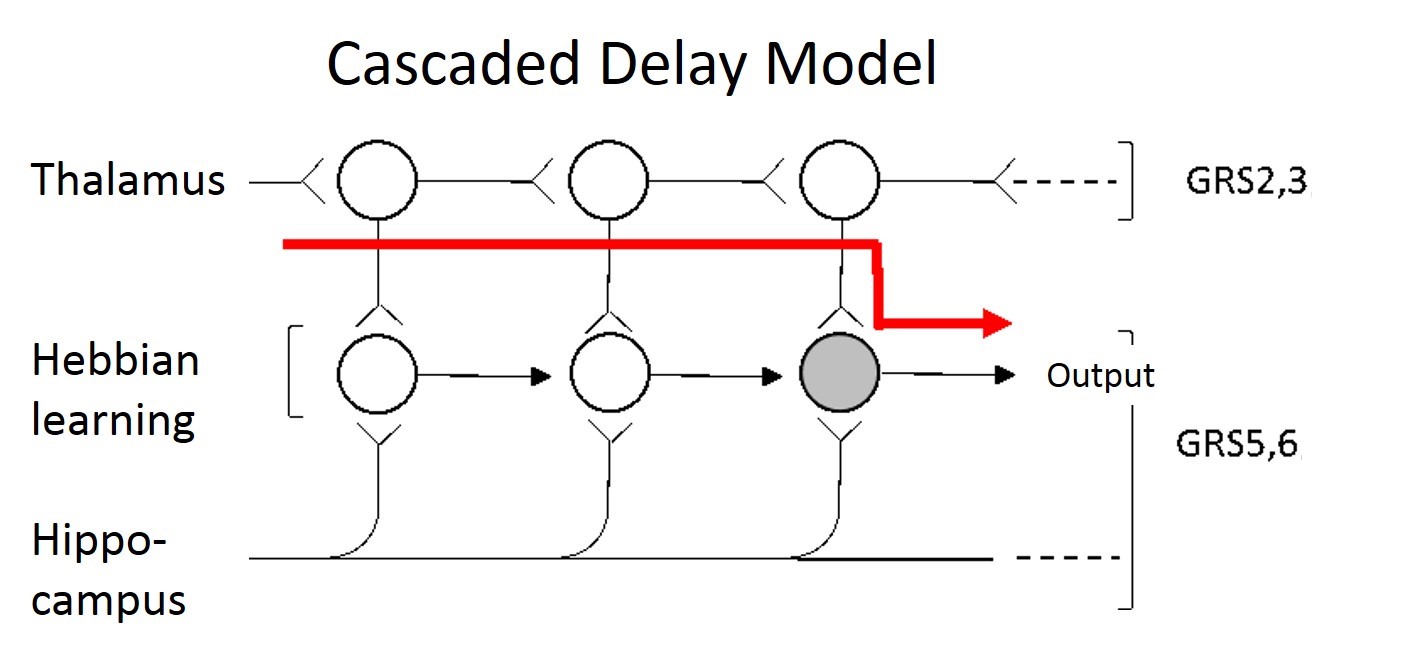
-
 Integral structure of perceptual space-time
Integral structure of perceptual space-time- Principal Investigator
- Isamu Motoyoshi
Associate Prof., Grad. Sch. of Arts & Sciences, Univ. of Tokyo
-
Increasing psychophysical evidence shows that our perception of position, timing, and duration of visual stimuli are strongly dependent on motion information. These findings lead us to the notion that perceptions of space and time are reconstructed as temporal integrals of motion (velocity) signals. Inspired by our recent observations that the early visual system may encode a temporal change of velocity rather than constant velocity, we propose a two-stage process in which acceleration signals are integrated into the velocity perception and velocity signals are integrated into the perception of space and time. In the present study, we will examine this hypothesis via vigorous psychophysical measurements, illusions, natural movie analysis, and EEGs and determine how the brain creates continuous representations of space and time from sparse signals.
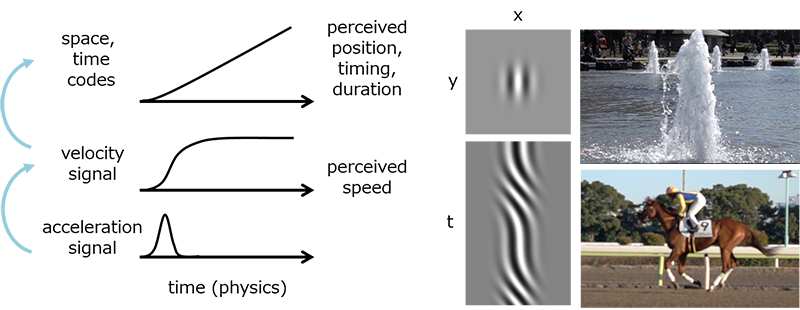
-
 Neuronal circuit mechanisms integrating the past and present and controlling future behavior
Neuronal circuit mechanisms integrating the past and present and controlling future behavior- Principal Investigator
- Hiroshi Nomura
Associate Prof., Faculty of Pharmaceutical Sciences, Hokkaido Univ.
-
Past experience affects the formation of memory about current experience, and this associative memory underlies future behavior. However, the neuronal activity underlying this memory formation and retrieval remains unclear. In this study, we will examine the neural circuit mechanisms by which multiple events are associated with each other and how this association affects future behavior. We will employ a fear-conditioning paradigm in which mice learn an association between context and footshock. We will use in vivo calcium imaging of freely moving mice to measure the neuronal activity during individual events and examine the relationship between neuronal activities during multiple events. We will use optogenetics to investigate the relationship between the neuronal activities and behavior. This study will contribute to our understanding of neuronal encoding of past, present and future events.
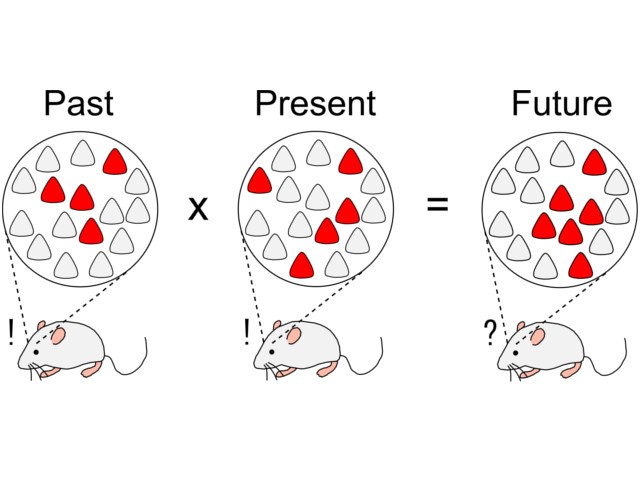
-
 Neural mechanisms and spatial mapping of intrinsic time references that are necessary for auditory temporal analysis
Neural mechanisms and spatial mapping of intrinsic time references that are necessary for auditory temporal analysis- Principal Investigator
- Tetsufumi Ito
Assistant Prof., Faculty of Medical Sciences, Univ. of Fukui
-
- Co-investigator
- Kazuyuki Murase
Prof., Graduate School of Engineering, Univ. of Fukui - Co-investigator
- Shizuko Hiryu
Associate Prof, Faculty of Life and Medical Sciences, Doshisha Univ. - Co-investigator
- Kota Kobayashi
Associate Prof, Faculty of Life and Medical Sciences, Doshisha Univ.
For discriminating time-varying, frequency-modulated (FM) sounds such as voice, internal time references are necessary in the brain. Bats emit sweep FM sounds (chirps) which change their frequency from high to low with different speeds to their targets, and calculate the distance to these targets from the delay of the echoes. To quantify the delay, it is thought that internal time references are created in the inferior colliculus (IC). However, the neural circuitry underlying the temporal quantification has remained unclear. In the low-frequency region of the bat IC, a wide range of response latencies to chirps is observed, and the variety has been strongly suggested to be the basis of the internal time references. In this study, we will use bats and rodents both of which have the same cellular components in the local circuitry of the IC to clarify the neural circuitry and spatial organization of internal time references using neuroanatomical and neurophysiological techniques.

-
 Effects of “symbolized time” on complex search behavior: A study using foraging tasks
Effects of “symbolized time” on complex search behavior: A study using foraging tasks- Principal Investigator
- Jun Saiki
Prof, Graduate School of Human and Environmental Studies, Kyoto Univ.
-
“Symbolized time,” a mental function unique to humans, influences various aspects of our behavior. However, except for the theoretical analyses of speed-accuracy trade-off, little is known about the effects of symbolized time in more natural situations. This study focuses on foraging behavior to investigate the effect of symbolized time on the interaction of perception and decision making. Originally from behavioral ecology, foraging tasks have the following advantages: (1) they are similar to natural behavior, (2) theoretical optimality allows quantitative evaluations, and (3) sequential decision-making tasks produce many findings on neural mechanisms. Combining sequential visual searches and sequential decision-making tasks, we will explore the effect of symbolized time from its behavioral and neural bases. This study will extend and develop the current literature on time perception and prospective memory, and comparisons with animal studies will allow us to discuss functions of symbolized time from an evolutionary perspective.
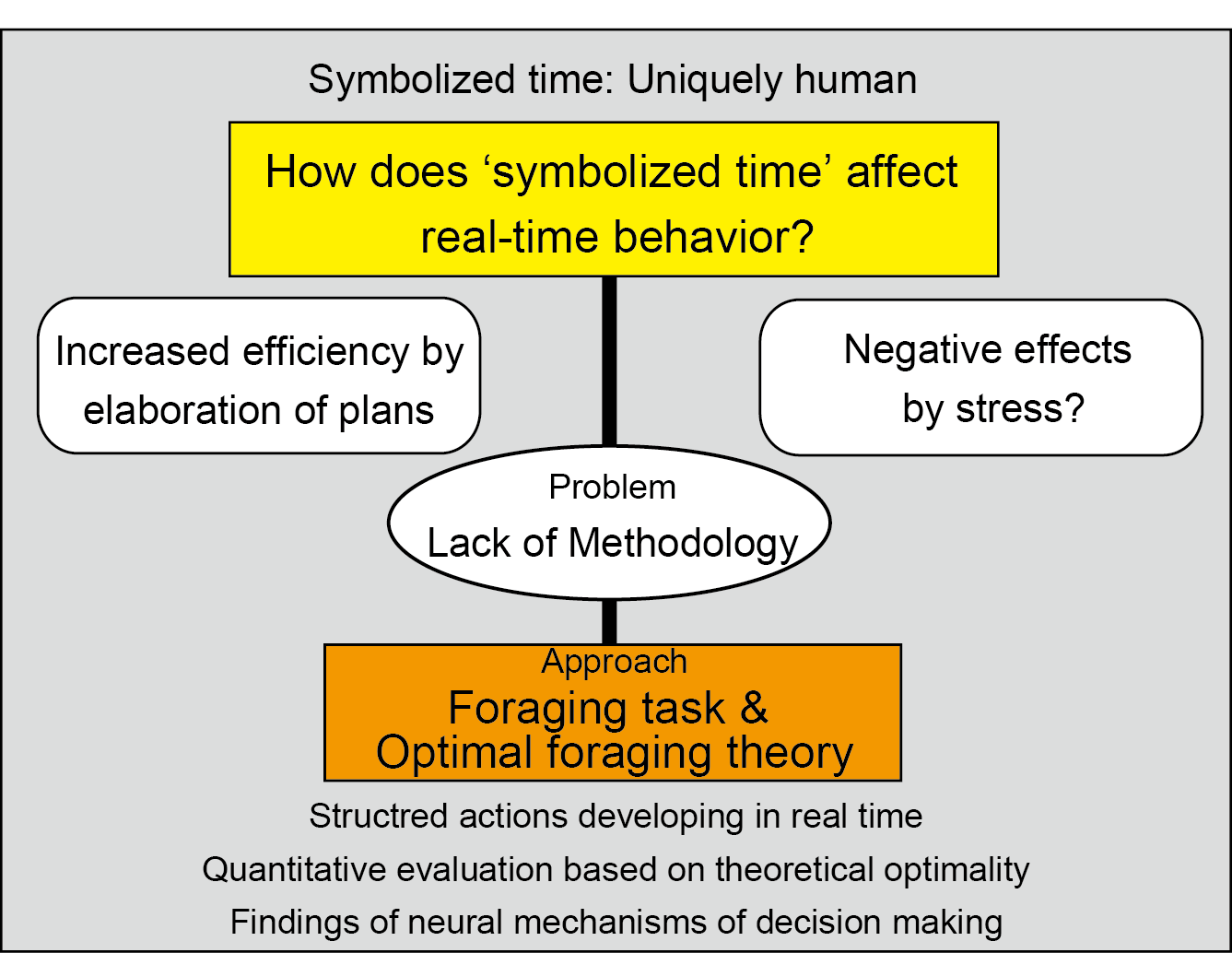
-
 Bodily and neural mechanisms of subjective time estimation in narrative comprehension
Bodily and neural mechanisms of subjective time estimation in narrative comprehension- Principal Investigator
- Hidetsugu Komeda
Associate Prof., Hakubi Project, Kyoto Univ.
-
- Co-investigator
- Hidekazu OsanaiProf., Faculty of Modern Communication Studies, Hamamatsu Gakuin Univ.
We need to represent temporal information during story comprehension. In our previous studies, readers monitored temporal shifts based on their subjective time sensation. In the current project, we examine the bodily and neural mechanisms of subjective time estimation using fMRI (functional magnetic resonance imaging) and cognitive psychological experiments. First, to clarify mental time travel, we will investigate how readers monitor forward and backward (after 1 minute, after 10 minutes, after one day, 1 minute before, 10 minutes before, and one day before) temporal information in stories. Second, we will examine neural substrates for subjective time estimation using the time production method. We hypothesize that the accuracy of time estimation predict reading times, including temporal shifts. Third, we will study the role of interoceptive awareness based on experiments for individuals with developmental coordinated disorder/dyspraxia, who have atypical motor abilities and atypical interoceptive awareness.
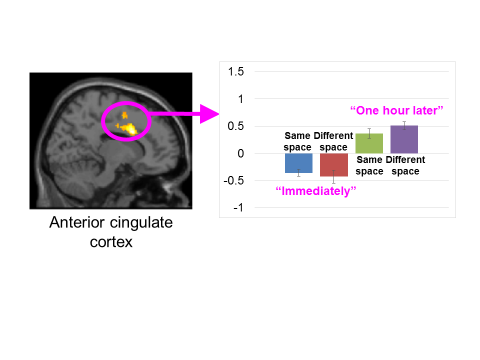
-
 The cognitive and neural bases of temporal finitude
The cognitive and neural bases of temporal finitude- Principal Investigator
- Kuniaki Yanagisawa
Assistant Prof., Kokoro Research Center, Kyoto Univ.
-
Humans can imagine myriad possible future events. In addition, with the development of the cognitive ability of future time perspective, they can recognize that their life is not endless. This human-specific cognitive function may influence decision making about future planning and behavior. In the present study, we will focus on the influence of the recognition of the finitude of human life on temporal discounting (i.e., the tendency to devalue future rewards relative to immediate ones). More specifically, we aim to (1) elucidate the cognitive and neural bases of temporal finitude using functional magnetic resonance imaging (fMRI), (2) elucidate how recognition of temporal finitude influences temporal discounting, and (3) compare younger and older adults in terms of sensitivity to the finitude of human life.

-
 Experimental aesthetics of mental time: investigations of awareness of beauty and attractiveness and the resulting brain oscillations
Experimental aesthetics of mental time: investigations of awareness of beauty and attractiveness and the resulting brain oscillations- Principal Investigator
- Hideaki Kawabata
Associate Prof., Department of Psychology, Faculty of Letters, Keio Univ.
-
Although recent research has investigated the temporal properties of emotion evoked by sensory information, the temporal properties concerning the processing of aesthetic feelings such as beauty and attractiveness remain unclear. In this study, using techniques of psychophysics, electroencephalogram (EEG), and brain stimulation, we investigate the temporal aspects of perceiving beauty and attractiveness with visual stimuli of artwork and facial images. In particular, we focus on the temporal streams related to being conscious of beauty or attractiveness. To this end, we examine the psychological processing of the awareness of visual stimuli that evoke aesthetic feelings, EEG oscillations elicited by perceiving beauty or attractiveness, and modulation of subjective feelings by brain current stimulation. Moreover, we examine the hemispheric asymmetry of EEG oscillations in the frontal cortex that was recently reported in studies of picture viewing. Thus, we will elucidate the relationship between aesthetic feelings and mental time via experimental aesthetics.

-
 Neural mechanisms that facilitate adaptive behavior based on acquired stimulus-outcome information
Neural mechanisms that facilitate adaptive behavior based on acquired stimulus-outcome information- Principal Investigator
- Masaaki Ogawa
Assistant Prof., Graduate School of Medicine and Faculty of Medicine, Kyoto Univ.
-
In the classical conditioning paradigm, a neutral stimulus that initially has no effect on a subject is repeatedly followed by a reward. The subject is then able to predict the reward during the time that the conditioned stimulus is presented. Furthermore, the subject can use that acquired stimulus-outcome information to facilitate subsequent adaptive behaviors required in similar conditions. Previous studies have shown that after this type of learning, neurons in the brain respond as if they know the temporal relationship between the stimulus and outcomes. However, how the temporal activity of neurons contributes to subsequent adaptive behaviors is unclear. Using optogenetics and electrophysiology, this research will reveal such temporally specific causal roles of neurons and their circuit mechanisms.

-
 The mechanisms of temporal measurement by hippocampal cell assembly sequences
The mechanisms of temporal measurement by hippocampal cell assembly sequences- Principal Investigator
- Shigeyoshi Fujisawa
Team Leader, Brain Science Institute, RIKEN
-
Neuronal representations of specific time points in temporally organized experiences (i.e., time cells and episode cells) have recently been found in the rodent hippocampus. These hippocampal time cells represent temporal information by internally organized sequential neuronal activities. However, it is not known whether and how hippocampal time cells are involved in measuring spent time. The aim of this project is to decipher the roles of time cells for temporal measurement and the network mechanisms of the formation of cell population sequences that represent temporal information.
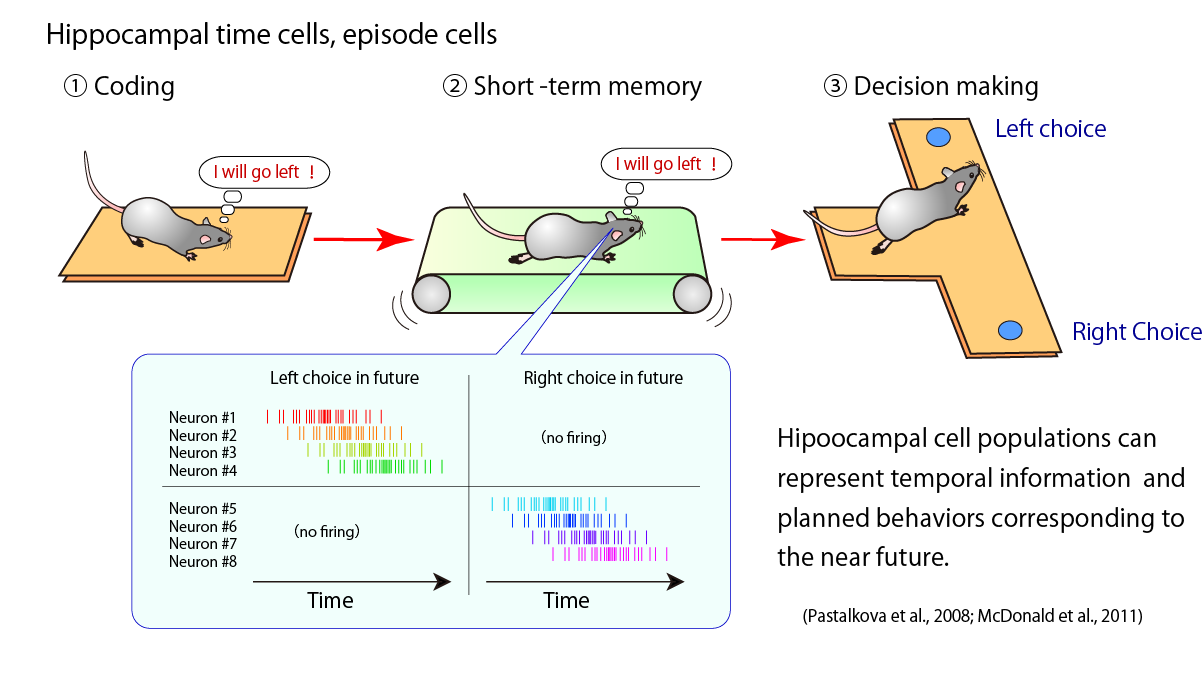
-
 Neuronal mechanism of temporal synchronization across different effectors
Neuronal mechanism of temporal synchronization across different effectors- Principal Investigator
- Nobuhiro Hagura
PhD, Center for Information and Neural Networks (CiNet)
-
Even for performing a simple daily action (i.e., pinching an object with the fingers), precise temporal coordination of finger muscles is essential. Thus, accurate motor control requires precise temporal estimation of movements. However, how the brain computes the temporal relationship between different body parts remains unknown. The aim of this project is to test our hypothesis that the oscillatory brain activity during movement execution functions as a mechanism to align the “clock” between different effectors.
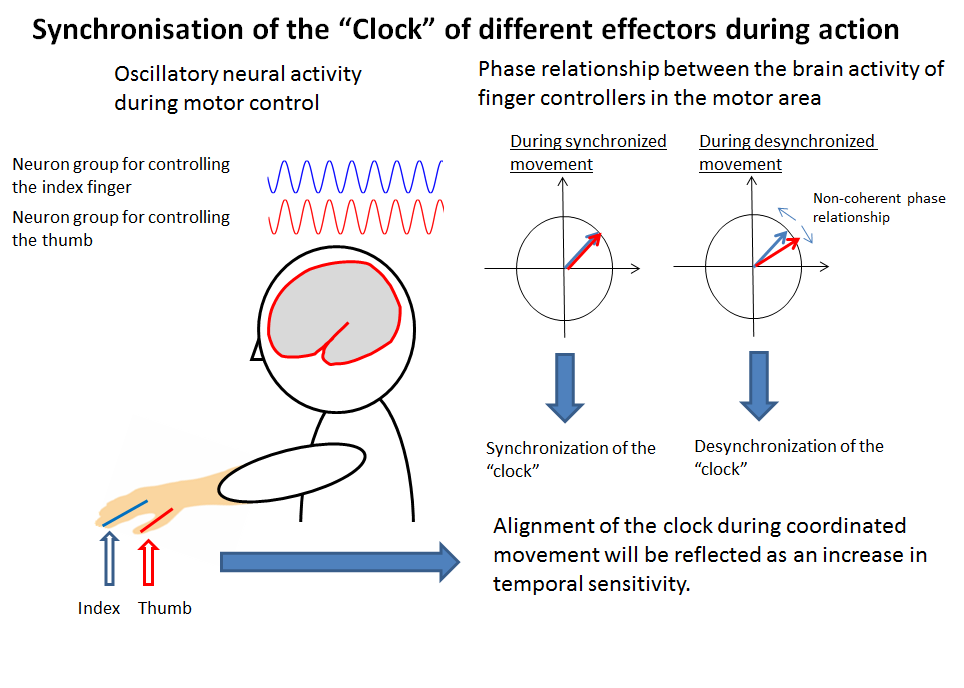
Affiliate
-
 Multineuronal activity in the cortex-basal ganglia system underlying action timing generation
Multineuronal activity in the cortex-basal ganglia system underlying action timing generation- Principal Investigator
- Yoshikazu Isomura
Prof., Brain Science Institute, Tamagawa Univ.
-
- Co-investigator
- Yutaka Sakai
Prof., Brain Science Institute, Tamagawa Univ.
Previously, we have examined the circuit mechanism underlying the spontaneous generation of voluntary movements in the cerebral cortex (e.g., primary motor cortex) and the basal ganglia (striatum) of the rat by combining operant learning tasks using forelimb lever manipulations with multineuronal recording and juxtacellular recording. However, it remains unclear how cortical and basal ganglia circuits generate action timing to execute an appropriate action. In this study, we are aiming to elucidate information processing through interregional circuits in the cerebral cortex and the basal ganglia to generate the action timing to spontaneously initiate a voluntary forelimb movement (in the absence of any stimulus). Our research will provide scientific knowledge to understand mental time in animals and humans.

-
 Neural basis of mental time travel
Neural basis of mental time travel- Principal Investigator
- Yukiyasu Kamitani
Dep. Head, Dep. of Neuroinformatics, ATR
-
The ability to recall past episodes and the ability to simulate future events are hallmarks of human cognition. Recent theories posit that mentations of the past and the future can be understood as components of a more general capacity termed “mental time travel”, and studies found that common brain areas are activated during past- and future-related tasks. However, how the specific mental contents of mental time travel are represented in the brain remains elusive. In this project, using brain decoding methods, we compare fine-grained brain activity patterns during mentations of past and future events with those induced by stimuli or current tasks, revealing the commonalities and differences in neural representations between the past, the present, and the future. These results will lead to a better understanding of the neural basis of human cognitive representations that extend beyond the present.

-

- Principal Investigator
- Shin'ya Nishida
Group leader, Sensory Representation Research Group, Human Information Science Laboratory, NTT Communication Science Laboratoriesy
-
 Elucidation of the neural basis of momentary hedonism in addiction and the development of a novel intervention
Elucidation of the neural basis of momentary hedonism in addiction and the development of a novel intervention- Principal Investigator
- Hidehiko Takahashi
Associate Prof. Department of Psychiatry, Kyoto Univ. Hospital.
-
Patients with addiction exhibit momentary hedonism. Previous studies have repeatedly reported impulsivity and excessive temporal discounting in addiction patients. Therefore, these patients are suggested to have an impairment of episodic future thinking. Because episodic future thinking and autobiographical memory share common neural substrates, we predicted that addiction patients would also show impairment of autobiographical memory. In the first year of the study, we will investigate the relationship between impairment of autobiographical memory/episodic future thinking and temporally myopic behaviors. In the second year, we will use memory specificity training to enhance the specificity and concreteness of autobiographical memory in addiction patients. This method is expected to improve episodic future thinking and temporally myopic behaviors.
